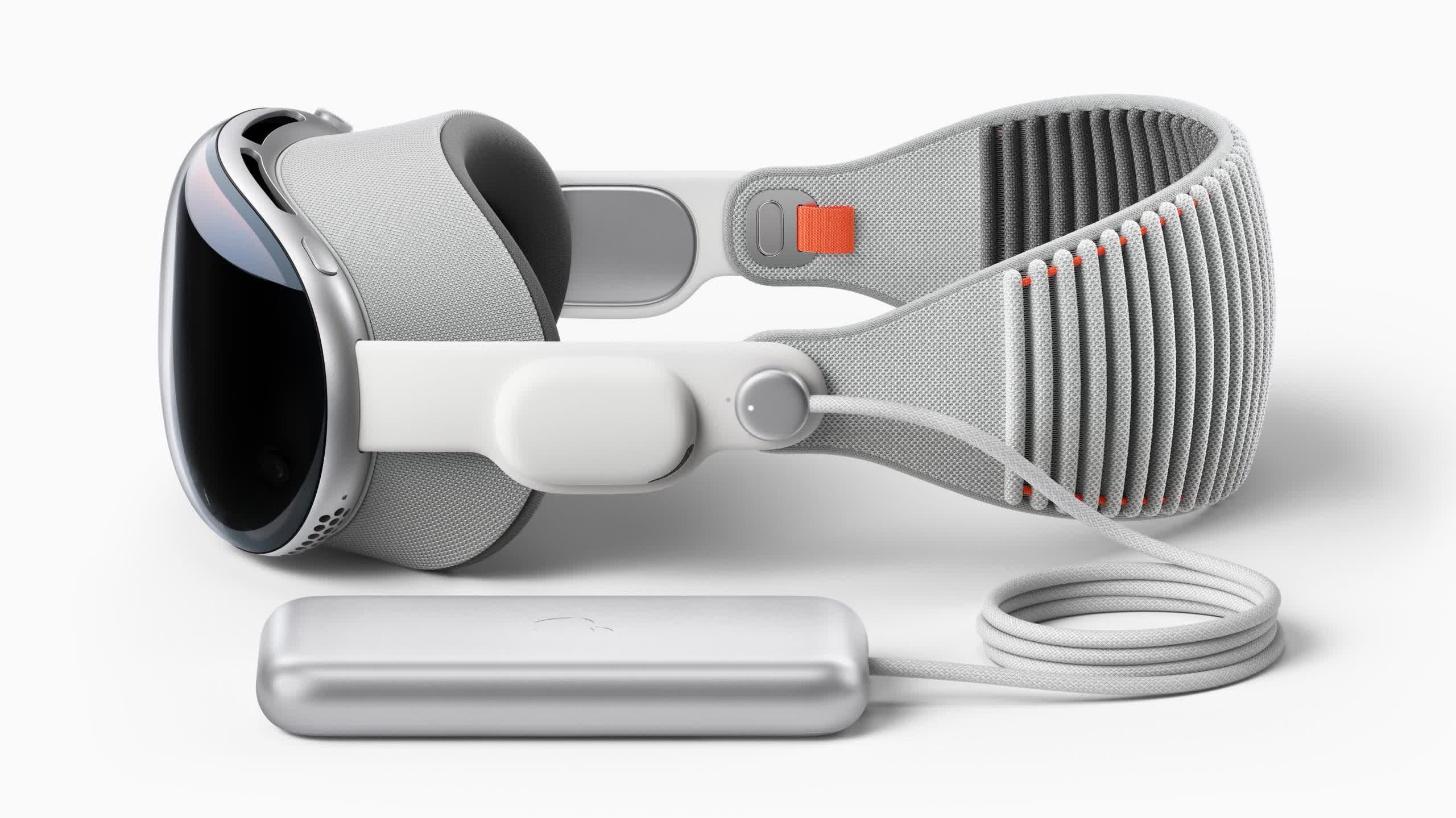In brief: The updated store page for the upcoming Apple Vision Pro confirms that wearing one will be like strapping a MacBook Air or iPad Pro to your face. The hardware specs closely align with Apple’s high-end tablets and entry-level notebooks, but its unique features could offer distinct advantages.
The Vision Pro is now available for pre-order and will begin shipping in two weeks. As such, Apple has updated the device’s web page with a complete rundown of its system specs. Underneath the lenses driving the new spatial computing experience lies the chip that powers the MacBook Air and iPad Pro.
Like the tablet and laptop processors, the Vision Pro’s M2 SoC features an 8-core CPU (four performance and four efficiency cores), a 10-core GPU, and a 16-core Neural Engine. However, the new R1 co-processor that Apple designed to handle audio and video input increases the device’s memory bandwidth to 256GB/s, roughly two and a half times that of the MacBook Air and iPad Pro and close to the 300GB/s found in the top-end MacBook Pro’s M3 Max.

Storage capacity is the only aspect of the Vision Pro that customers can configure, choosing between 256GB, 512GB, and 1TB. All models feature 16GB of unified RAM. Although some of Apple’s latest devices, like the iPhone 15 Pro and M3 MacBook Pro, support Wi-Fi 6E, the Vision Pro sticks to Wi-Fi 6.
The Vision Pro supports three refresh rates – 90Hz, 96Hz, and 100Hz. The mixed-reality headset can also run 24fps and 30fps video from multiple sources simultaneously. AirPlay mirroring allows users to send a 1080p stream of what they see to any AirPlay-compatible device. Additionally, the camera can take spatial photos or record spatial videos at 18mm with an f/2.00 aperture at 6.5 megapixels in stereo view.
The Apple Vision Pro launches on February 2, starting at $3,499. Apple confirmed it will come with several apps upon release designed to utilize its immersive “spatial” view, including games and entertainment apps.
However, three prominent streaming services – YouTube, Netflix, and Spotify – confirmed that their apps won’t support the Vision Pro. They won’t have native spatial apps, and their respective iPad apps won’t work either. The only workaround is for users to log into each service through the Vision Pro’s Safari browser. Netflix’s resolution limit for Safari on the Vision Pro remains unclear. However, the service enables 4K streaming through the browser on macOS, so watching Netflix in UHD may still be possible.

